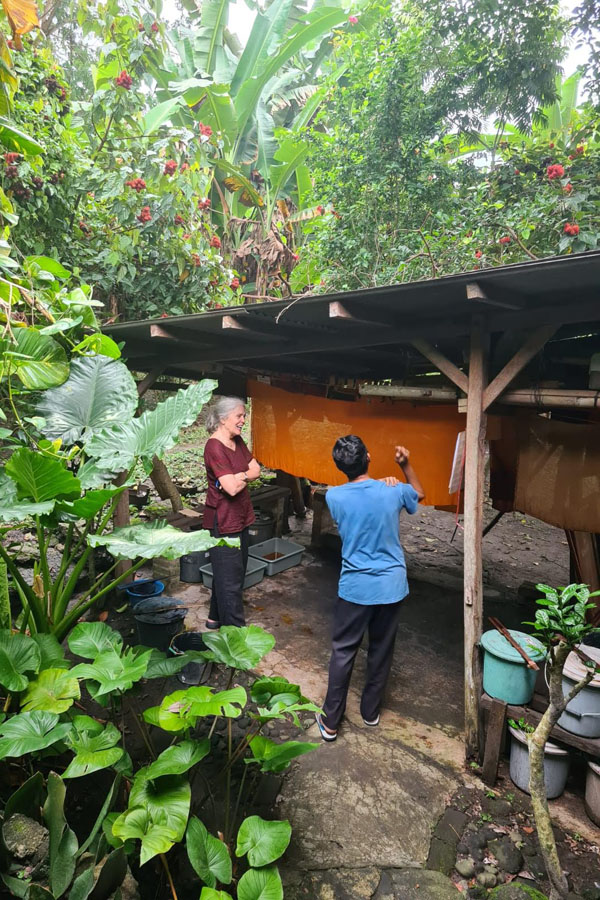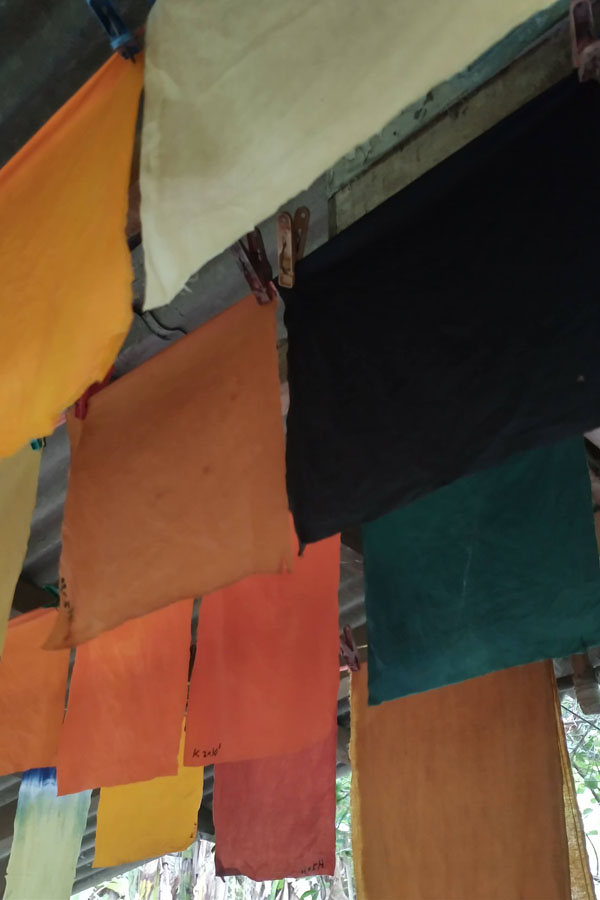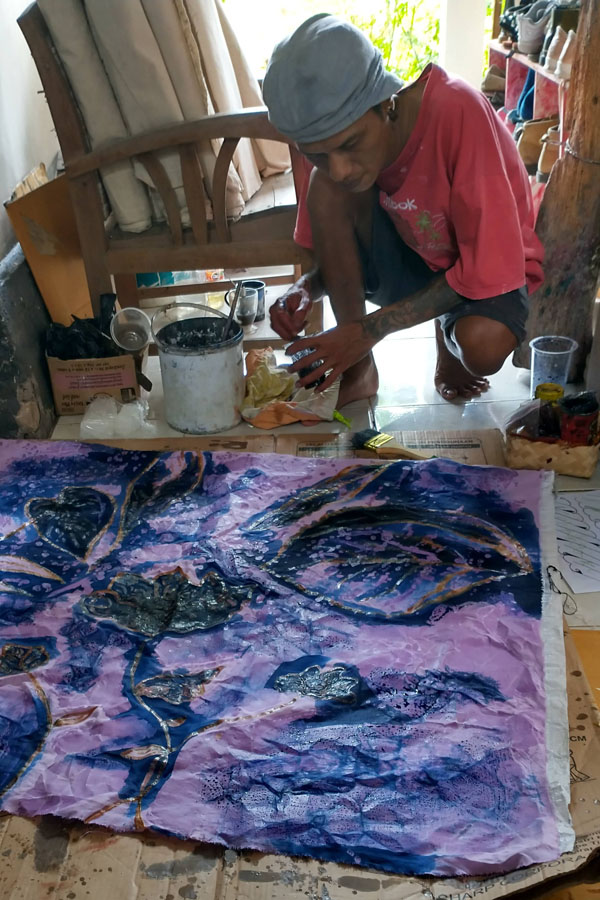Dyeing as a way of life in Java
Posted by Rose on 14th Mar 2023
Honing my skills for artisan made clothing - textile painting and dyeing.
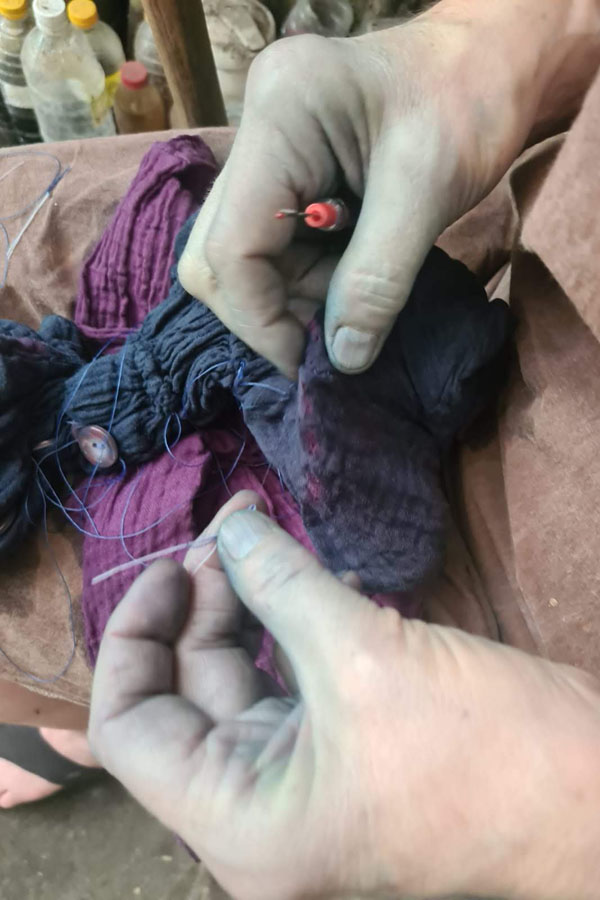
Picking apart shibori stitching after dyeing in indigo.
In the past year I’ve delved deeply into textile dyeing with an emphasis on natural dyestuffs. It’s been a fascinating journey and one that seems right in line with my focus on artisan-made clothing. Last year I signed up for an online indigo dyeing class with Maiwa, a Canadian school. Learning about the intricacies of indigo dyeing (it’s not all blue jeans blue by the way) introduced me to some of the underlying chemistry behind textile colors. Nowadays I almost always have an indigo dye pot in my workshop, ready to try new variations. It’s a lot of fun to put my newly gained knowledge to work creating scarves in various natural fibers.
At studio Jolawe, set in a jungle of plants, master dyer Pak Didi Purwadi and I discuss color.

The studio kitten kept an eye our work.
Flying to Java in January was another step on the path to discovering new dyeing techniques and materials. I was lucky enough to take a class with master dyer Pak Dedi from Batik Jolawe learning about natural dyeing. Since finding out about processing bark, leaves, seeds, and roots to create wonderful colors, I have ideas for more projects than there’s time. A big part of the curriculum was learning how to treat fabrics to take the dye stuffs well.
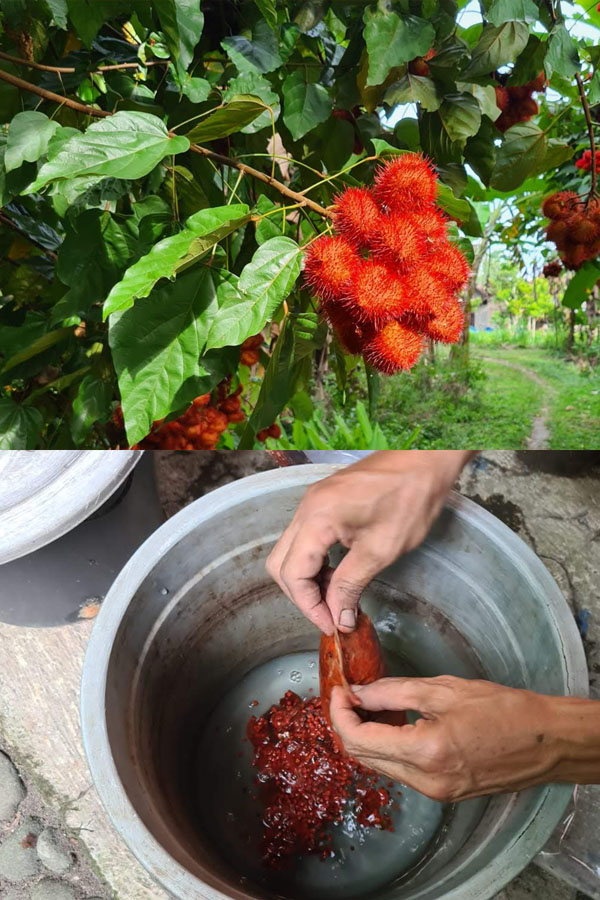
One of the plant materials, Bixa orellana, commonly called Lipstick Plant, went straight from the plant growing alongside the path to the dyebath. (Some of it went to my daughter Willow who applied it as lipstick for the rest of the week.) Top image: Fruit on the lipstick plant, lower image: fruit in the dye pot.
Some of the colors we made in our natural dye class.
Later in my trip, I studied batik painting with Yogyakarta textile artist Hananta Nur. I enjoyed trying my hand at the tjanting tool, which turns out to be even more challenging than it looks These tools have a reservoir for holding molten wax and a tapered spout with which the artist creates designs freehand. I found myself in awe of the fluidity of Hananta’s artistry.
My batik instructor, Hananta Nur, adding layers of wax and dye to our collaboration.
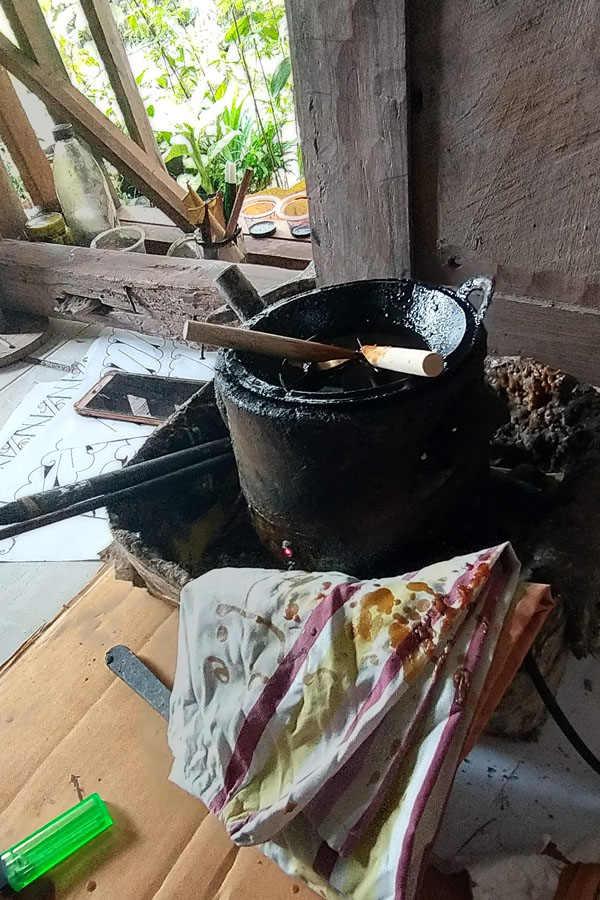
A pot of wax on the stove, brushes and tjanting tools for making batik
Eager to try dyeing with native plants closer to home, since getting back I’ve been experimenting with local materials such as Oregon grape as well as mistletoe leaves and stems. What will emerge from the dye pot and what it will look like when dried always contains an element of surprise. Stay tuned as I figure out what some of those surprises will be!

A detail from the wonderful batik Hananta made for me as a “graduation gift.” He used both tjanting tools and brushes to create a swirling, expressionist design.
Share:


